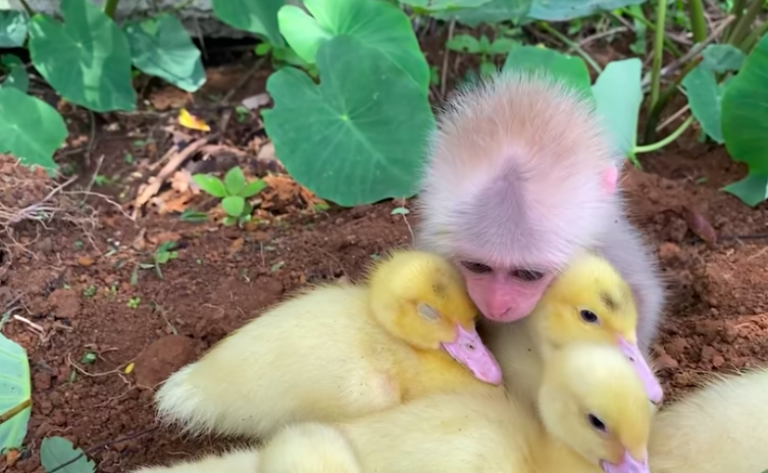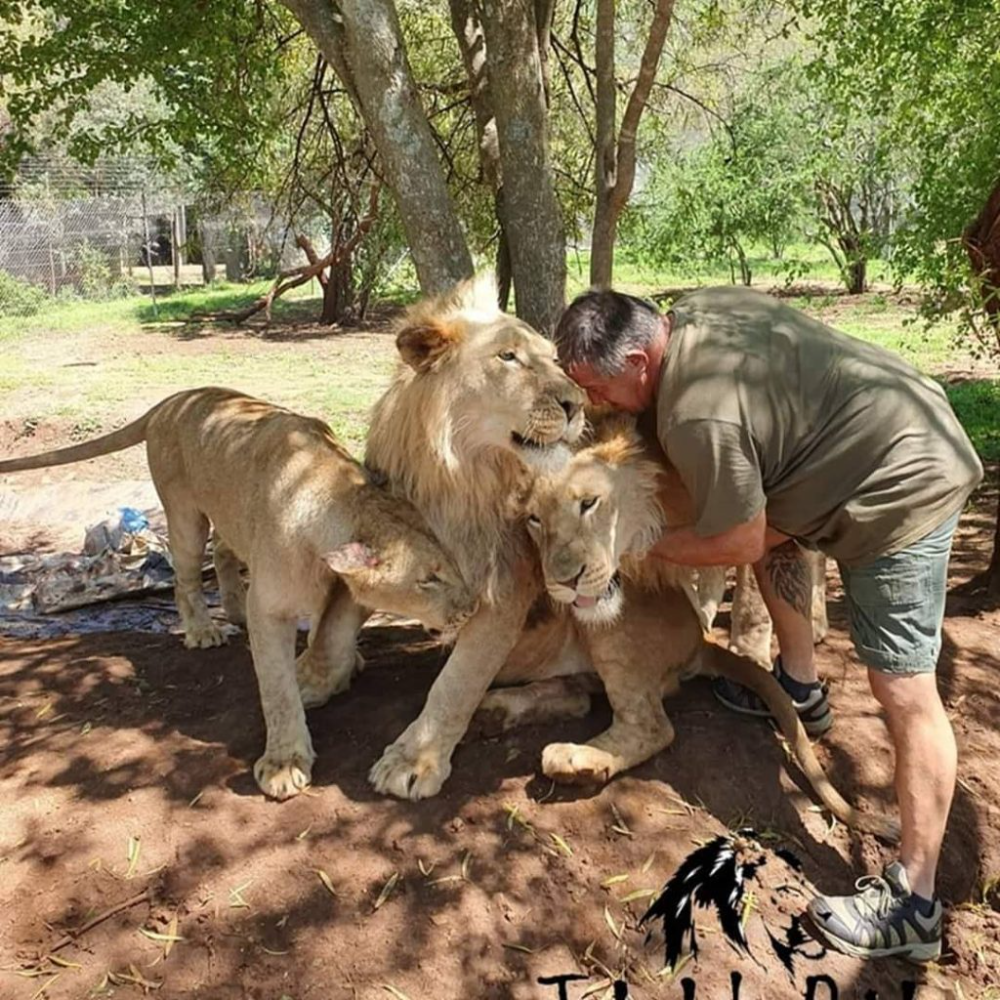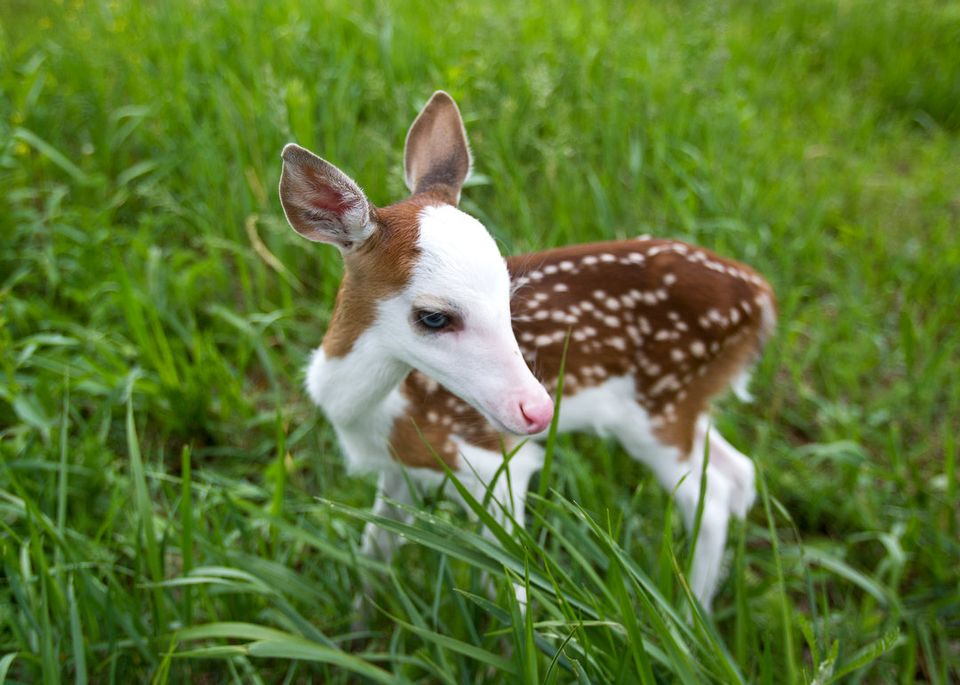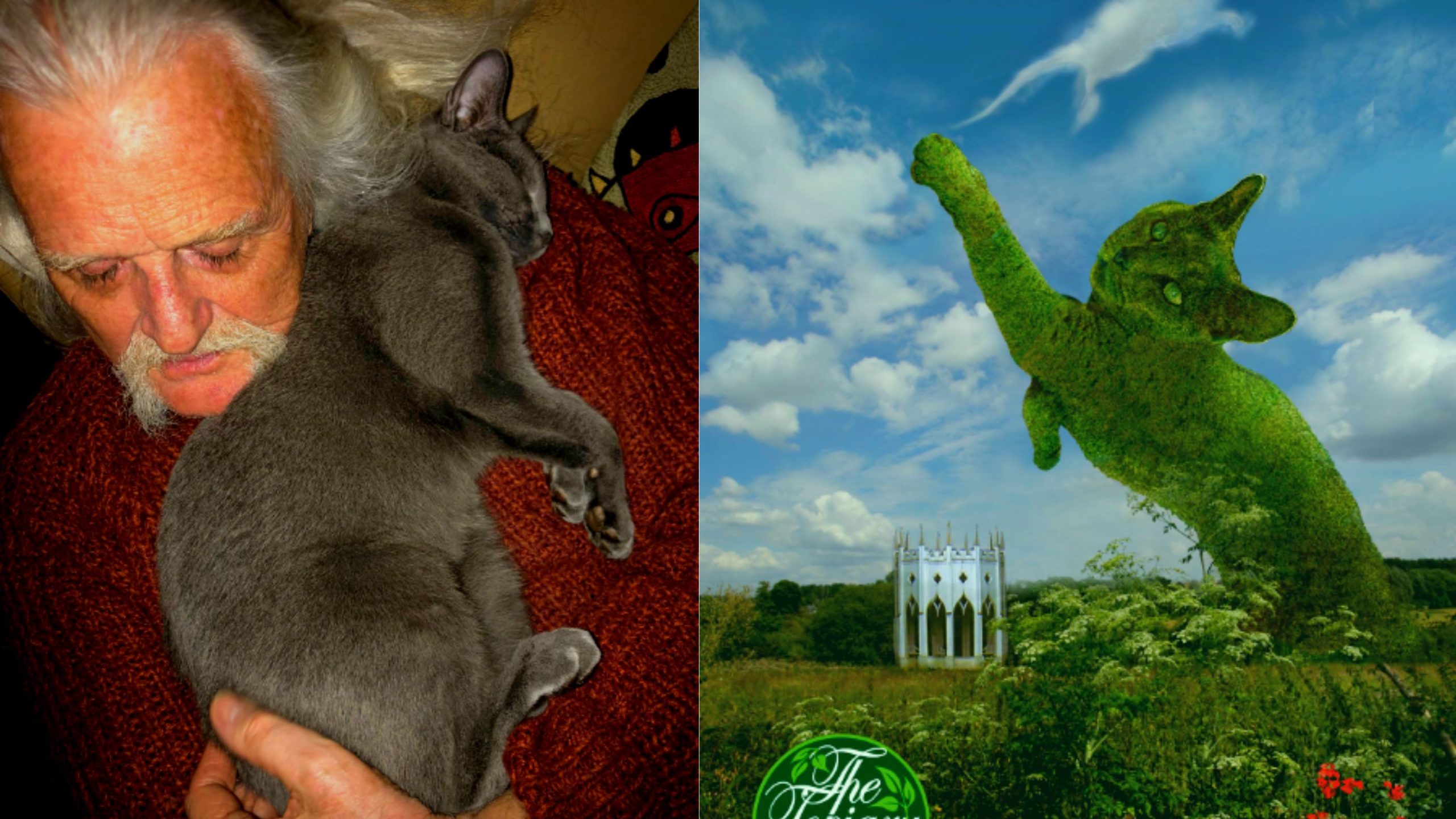Everyone is aware that zebras have black and white stripes — or, at the very least, the majority of them do. Tira, a newborn zebra, appears to be a little different.
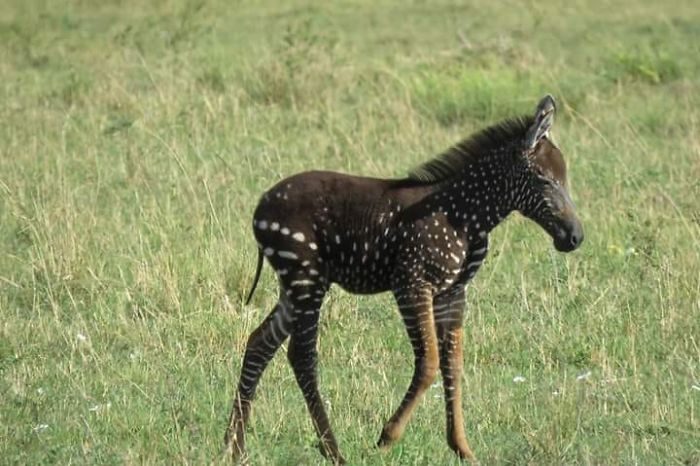
Tira Unique Polka Dotted Baby Zebra was born with a dark coat with white polka dots and a few small stripes around his legs.
Photographer Antony Tira initially thought he was photographing a captured zebra that had been painted or marked for migration purposes. But then he realized what he’d found was a newborn zebra with a melanin disorder.

Melanism is the polar opposite of albinism in that dark pigmentation develops in the fur rather than light pigmentation.
Zebras have one of the most recognizable coats in the animal kingdom, distinguished by their distinct black-and-white stripes. A newborn zebra foal with unusual polka-dot markings, rather than the typical striped coat, was spotted in Kenya’s Masai Mara National Reserve. In fact, this is the first time this pattern has been observed among zebras in the Maasai Mara, though it has previously been observed in Botswana’s Okavango Delta.

Antony Tira, a Maasai tour guide and photographer, was the first to notice and photograph this rare black baby zebra with white spots near the Mara River.
Antony Tira told a Kenyan newspaper, “At first I thought it was a zebra that had been captured and painted or marked for purposes of migration.” “When I first saw it, I was perplexed.”
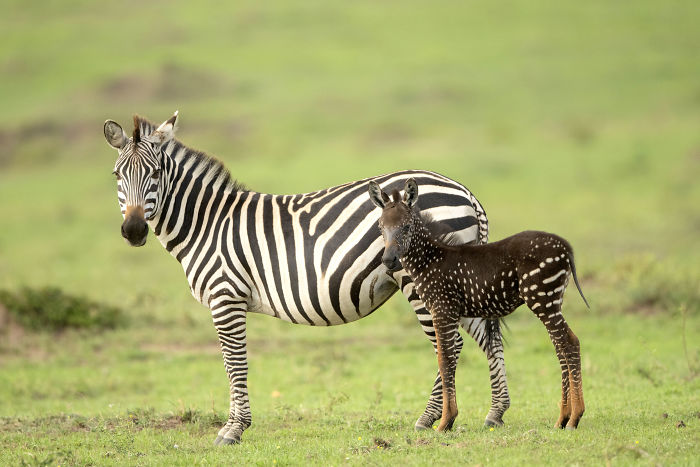
As word of the unusual zebra foal spread on social media, it triggered a human “stampede” in the reserve. The tour guides were directing eager tourists and photographers to the lookout area, where they could catch a glimpse of the newborn zebra and his mother. Another professional photographer, Frank Liu, spotted the zebra foal the next morning after it was discovered and was able to capture some interesting images as well.
We are now on Pinterest, Instragram
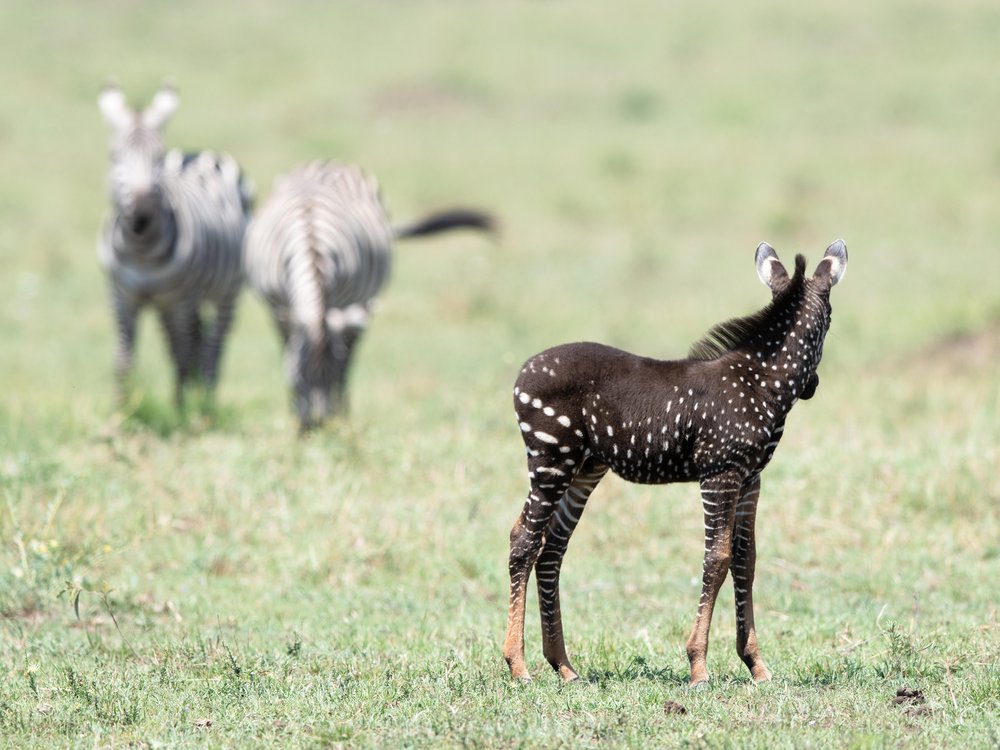
Credit: Frank Liu Photography
“I was out looking for rhinos to take pictures early that morning,” Liu explained. “We spent a couple of hours [searching] around sunrise and failed.” That’s when we came across this mutated zebra that had just been discovered the day before.”
Mr. Liu’s reaction was similar to Mr. Tira’s the previous morning. “At first glance, he appeared to be of a different species entirely,” Mr. Liu had added. Although he’d never seen this pattern on a zebra before, Frank Liu quickly realized that it was the result of a pigment disorder.
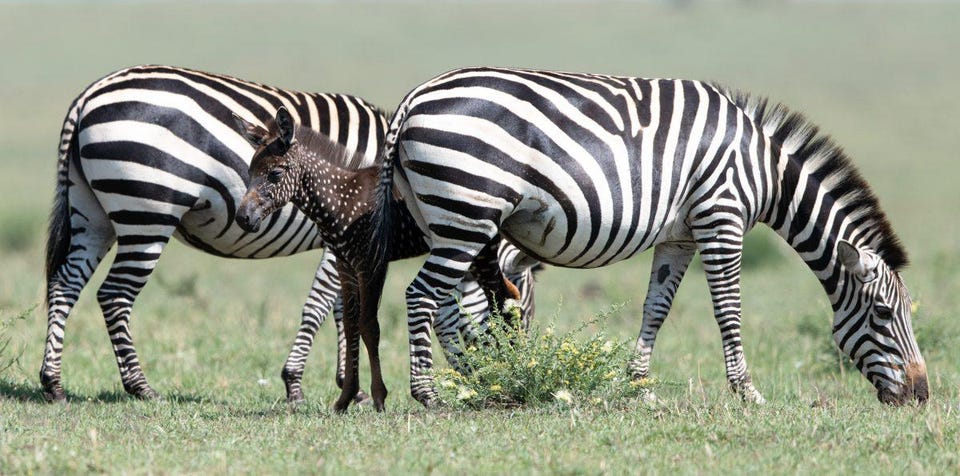
Credit: Frank Liu Photography
Tira, the adorable baby zebra, was named after the guidance who discovered him. The photographer elaborated on this.
“The name ‘Tira’ was coined by the local Maasai guide who first discovered him,” Mr. Liu explained. “There is a general rule within the park that whoever finds an animal of significance gets to name it.” “Tira was the surname of the guide who found him.”
According to Ren Larison, a biologist at the University of California, Los Angeles, the zebra foal has a genetic condition called “pseudomelanism,” which causes abnormalities in zebra stripe patterns. Zebras are basically dark-skinned animals, and their stripes are formed by specialized skin cells called melanocytes. Their function is to transport melanin, a group of pigments that provide yellow, red, brown, or black color to the hair and skin. As a result, melanin-containing hairs appear black, while non-melanin-containing hairs appear white. However, on rare occasions, something goes wrong and the melanin does not appear as stripes.
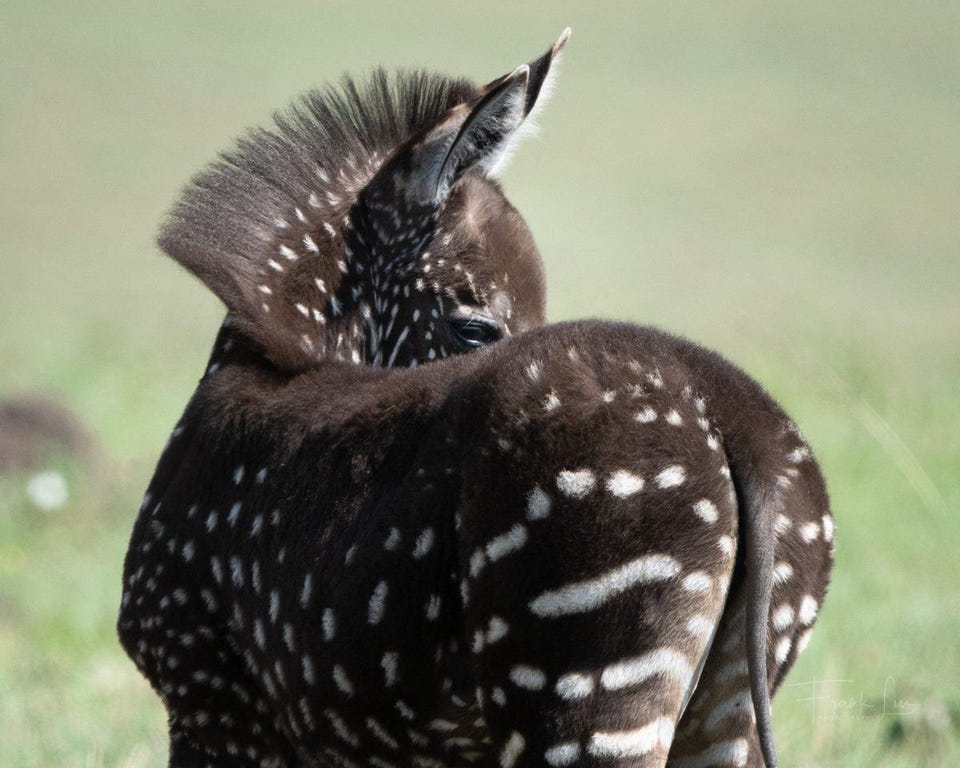
“There are a variety of genetic changes that can disrupt the process of melanin synthesis, and in all of those disorders, the melanocytes are thought to be normally distributed, but the melanin they make is abnormal,” said Greg Barsh, a geneticist and faculty investigator at the HudsonAlpha Institute for Biotechnology.
“This animal is unlike others described as pseudo-melanistic,” Professor Barsh added. “It’s probably better described as’spotted’ or ‘partially spotted.’ “In other animals where the biology and genetics are understood, melanism refers to increased production of a specific pigment type.”

Is Tira’s black coloration and complete absence of stripes the result of having too many melanocytes, or are his melanocytes producing too much melanin?
Tira’s condition is most likely not due to a lack of melanocytes, as melanocytes are universally and ubiquitously distributed throughout zebra skin. According to Professor Barsh, in a spotted zebra like Tira, the melanocytes are still uniformly and ubiquitously distributed, but the melanocytes don’t know where they are on the body. This means that partial spotting in zebras is not an abnormality of melanin synthesis, but rather an abnormality of melanocyte identity.
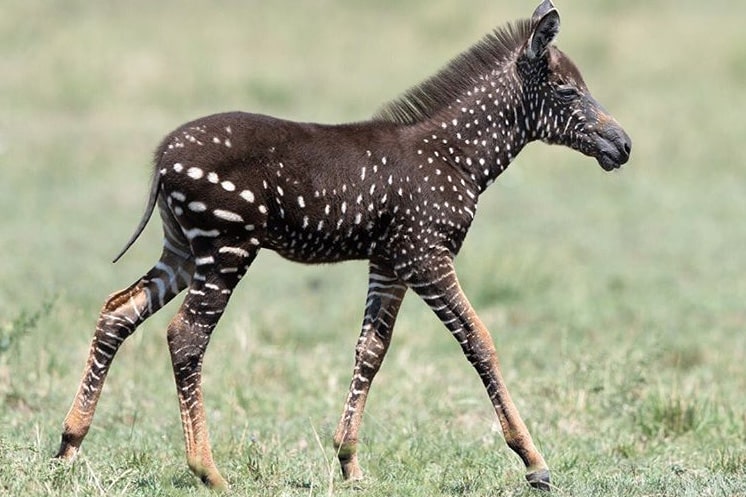
Unfortunately for Tira, this particular coat pattern may also indicate a shorter life expectancy. For a long time, scientists have debated the function of zebra stripes. There seem to be a variety of theories about why people use camouflage, whether for camouflage, social signaling, or temperature control. However, it is theorized that the black-and-white pattern repels biting flies, such as horse flies, which spread diseases. Flies are a vector for a number of diseases that are fatal to zebras in Africa, and their thin coats make them more vulnerable to bites.

Credit: Frank Liu Photography
The mesmerizing stripes of zebras appear to disorient flies, and some studies show that flies find it more difficult to land on black-and-white striped surfaces than uniformly colored ones. Tira, without the typical striped coat pattern, is a much more convenient target for flies and may be more likely to be exposed to dangerous bites. In addition, due to its unusual markings, the baby zebra may stand out from the herd and be easier to spot by predators, according to UCLA biologist Ren Larison.
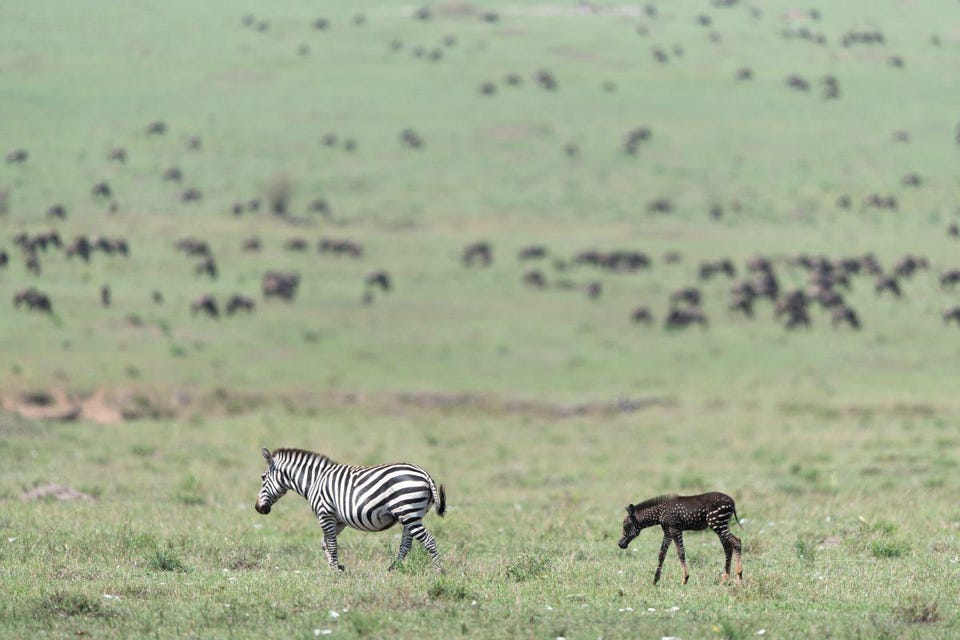
Credit: Frank Liu Photography
“Research on other organisms has shown that, while it is more difficult for a predator to target an individual in a group, it is easier if an individual is different,” Larison explained. “I’ve seen so many photos of foals with this specific pattern over the years, but only one photo – from the 1950s – in which the individual was either a juvenile or an adult.”
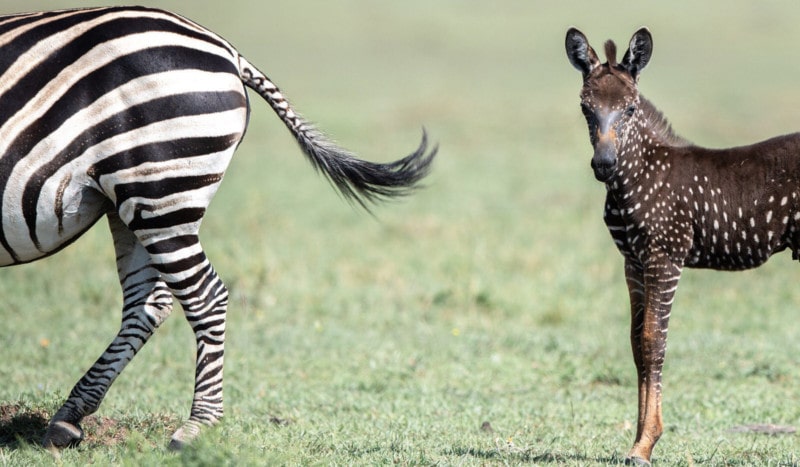
However, if Tira can resist the flies, he should be fine. Zebras, it appears, are tolerant of difference, and research shows that creatures with unusual coat patterns fit right in with the herd.
Read another amazing story about; Orphaned Baby Kangaroo Wants To Hug His Teddy Bear :Heart Touching Moments



